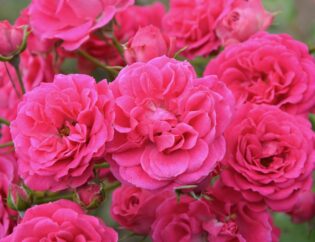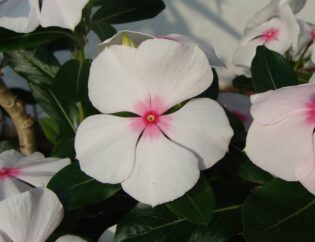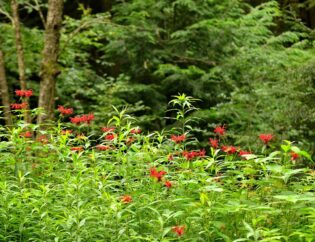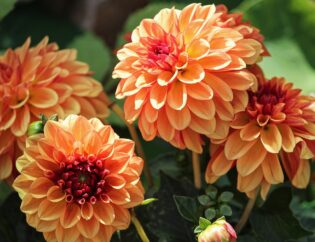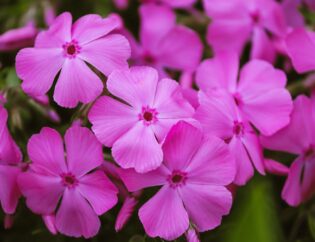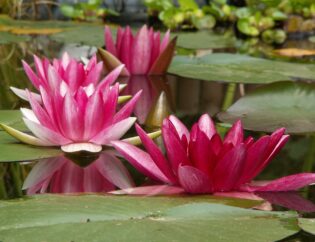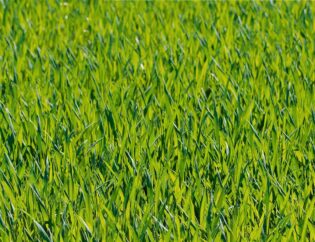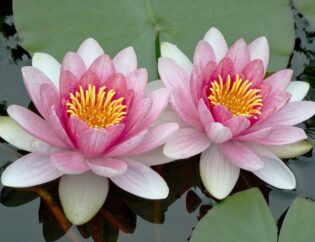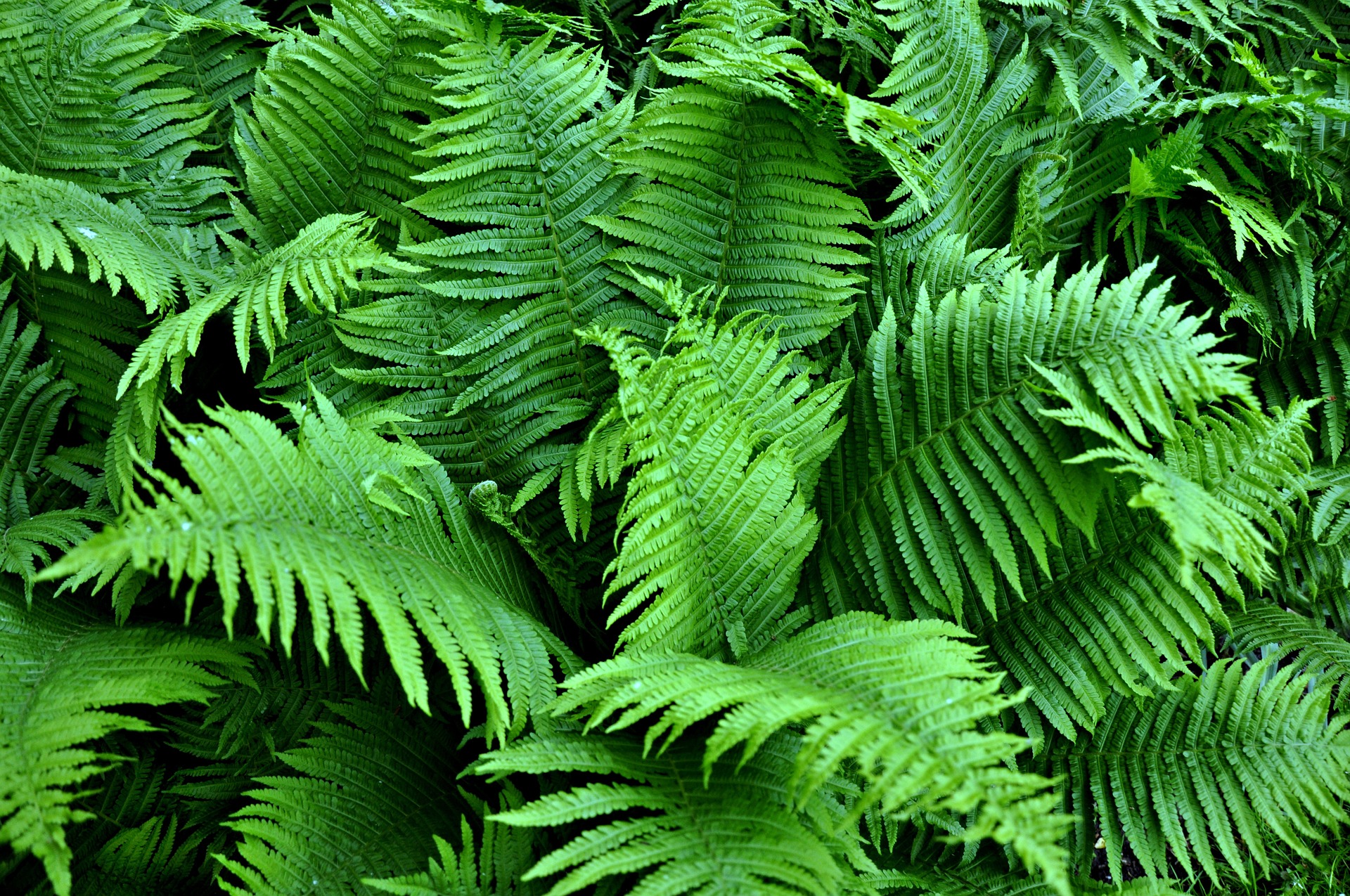
Struggling with a gloomy corner in the backyard? In shady backyards or areas of woodland landscaping, it can be difficult to get flowering plants to bloom. However, these conditions are perfect for landscaping with ferns.
These low-maintenance plants come in different colors and textures that are perfect for perking up the shady areas of a yard. Check out some great ideas of what to use here!
Why Plant Ferns?
Landscaping with ferns offers some great benefits for any yard. With the interesting shapes of their foliage, they add a unique touch of natural beauty. And for even more interest, some types change color throughout the year.
Additionally, ferns are useful in the landscape design beyond their woodland aesthetic. To soften a corner or harsh edging, choose feathery, delicate ferns planted in sweeps. For a modern look, plant large, statuesque ferns in pots or in spaced rows with mulch for weed control.
As perennial plants, they are low-maintenance and do not need to be replanted. Even better, they love moist, shady areas of the yard where it can be hard to get other species to grow.
What Do Ferns Need?
Though ferns like a moist environment, the soil needs to be well-drained so that the roots don’t rot. If the soil is very sandy or heavy on the clay, till a couple of inches of organic material into the soil. The goal is an evenly moist soil that is soft and aerated, never compacted.
The pH of the soil should be on the acidic side and ferns benefit from a slow-release fertilizer in the spring. Take care not to over-fertilize. Ferns are comparatively light feeders, and too much fertilizer can promote weed growth.
What Are Good Companion Plants?
Ferns add interesting textures and, though not all are green, their colors tend to be muted. To add splashes of color, it’s nice to plant a few companion plants in the area.
Usually, homeowners landscape with ferns in shade gardens. Other, more colorful plants that enjoy these conditions include hostas, bleeding hearts, columbine, Solomon’s seal, and impatiens.
If a woodland-style garden is desired, choose flowering plants in soft blues, yellows, purples, and white. For this type of landscape, keep the garden foliage dominant and plant flowers sparingly. Looking to nature, a forest is mostly green with small touches of other colors. Emulating that palette will create a more natural-looking result.
So, what are some good ferns to plant? Let’s take a look.
Southern Shield Fern
The southern shield fern is a large plant that does well in moist conditions. In the wild, it can be found growing along rivers and streams or in swamps or bogs. It grows about 2 – 4 feet tall and spreads to about 2 feet.
Surprisingly, once the plant is established it also handles drought quite well and is tolerant to the heat. It still benefits from shade to keep it protected from harsh sunlight and is deer resistant.
Lady Fern
Lady ferns get their name from their dainty, “lady-like” appearance. There are several varieties of lady ferns to choose from and their size and appearance vary considerably.
For example, the ghost variety has silver-toned leaves and grows between 1 to 3 feet high and wide. But the lady in red fern has bright reddish-purple stems and delicate green fronds. It can grow to 3 feet wide but only reaches about 20-24 inches tall.
Holly Fern
The holly fern is a hardy plant that is native to the Eastern United States. The leaves are sharp and create lush, green foliage that fills shadowy areas quite nicely.
In mild climates like Atlanta’s, the holly fern is evergreen. If it gets cold enough, the fern will drop its leaves but they will grow back in the spring. Holly ferns grow about 2 feet tall and 3 feet wide. Over time, the fern can become unkempt and look rough around the edges. Prune away spindly fronds to make way for new growth.
Autumn Fern
The autumn fern is a type of wood fern and is an excellent choice for those looking for some extra color when landscaping with ferns. In the spring, the plant bursts forth with copper-colored fronds. In the summer it turns to green, and changes once more to a rust color in the fall.
This fern is small at only about 18 inches tall and wide and is perfect for tucking into little spots that need a touch of color.
Western Sword Fern
The sword fern is a hardy plant that can be found growing wild in most of the Western United States. It gets its name from the long fronds that grow out of a relatively small round base. The deep green foliage adds evergreen color all year round.
This fern benefits from sun protection and is best grown in full shade during the hot Georgia summer. It’s also a great choice for a container or hanging basket.
Royal Fern
The royal fern is one of the larger fern species with some fronds measuring over a foot wide and reaching nearly six feet tall. This fern is notable for its hardiness to wet soil, growing right at the edge of lakes and ponds.
It naturally grows in bogs and along streams and is perfect for wet, shady areas where it is nearly impossible to grow blooming plants. The intriguing, light green foliage is perfect for perking up a dark corner of the flower bed.
Japanese Painted Fern
The Japanese painted fern is another type of lady fern. Its unusual silvery-purple foliage makes it a great choice when landscaping with ferns to add different colors to the mix.
This fern loves a bit of morning sun and will reward homeowners who choose its placement well with its best colors. Expect this fern to grow about 2 feet wide and between 12 and 18 inches tall.
Ferns as Houseplants
It’s a shame to pass up a truly gorgeous plant because the right conditions just aren’t available in the backyard. Fortunately, many beautiful ferns make fantastic houseplants!
For starters, a bird’s nest fern is visually striking with thick, waxy tendrils that emerge from the center in a pleasing pattern. They are very tolerant of drier conditions found inside homes (say, when the heat is on in the winter).
For that instant fairytale forest look, a maidenhair fern cannot be beat. These plants boast soft, delicate fronds that arch gently downward. The foliage is full and the plant has a fluffy appearance.
Lastly, a Boston fern has that quintessential fern look so many designers use. Often found in hanging baskets, these beauties have more structure than a maidenhair and more fullness than a bird’s nest fern.
Get the Best Ferns for Your Georgia Yard!
Don’t hesitate to contact our landscaping services experts here at Atlanta Turf & Tree. Founded in 2007 and specializing in the greater Atlanta area, we know a thing or two about landscaping in Georgia. We can help you with all of your landscaping and lawn care needs, including choosing the best ferns for your yard!
